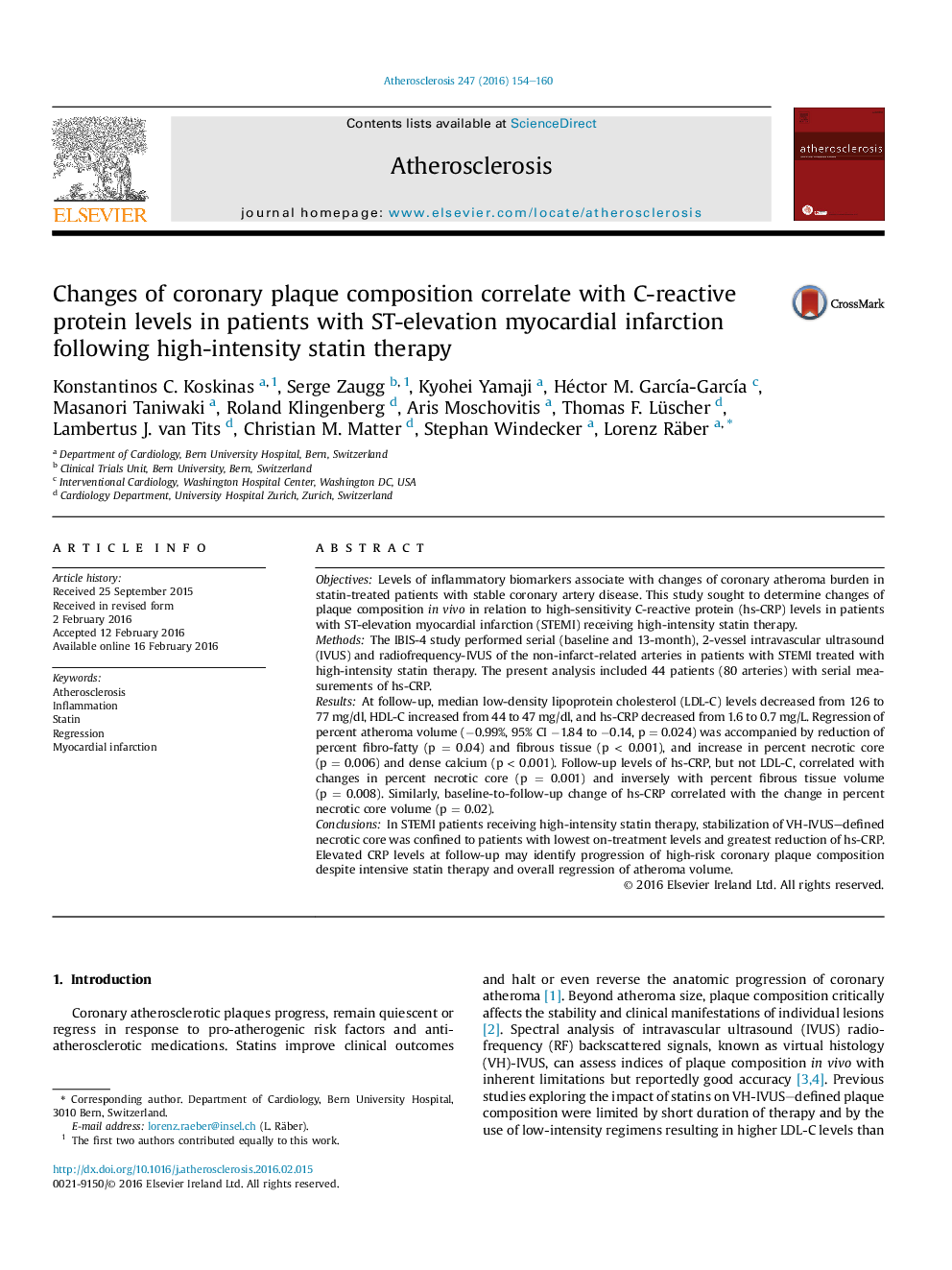| Article ID | Journal | Published Year | Pages | File Type |
|---|---|---|---|---|
| 5943360 | Atherosclerosis | 2016 | 7 Pages |
â¢High-intensity statin therapy altered coronary plaque composition following STEMI.â¢Necrotic tissue content increased despite statin treatment and atheroma regression.â¢Changes in necrotic core tissue by VH-IVUS correlated with CRP, but not LDL-C levels.â¢Necrotic core stabilization was confined to patients with greatest reduction of CRP.â¢Future studies should examine possible clinical implications of these findings.
ObjectivesLevels of inflammatory biomarkers associate with changes of coronary atheroma burden in statin-treated patients with stable coronary artery disease. This study sought to determine changes of plaque composition in vivo in relation to high-sensitivity C-reactive protein (hs-CRP) levels in patients with ST-elevation myocardial infarction (STEMI) receiving high-intensity statin therapy.MethodsThe IBIS-4 study performed serial (baseline and 13-month), 2-vessel intravascular ultrasound (IVUS) and radiofrequency-IVUS of the non-infarct-related arteries in patients with STEMI treated with high-intensity statin therapy. The present analysis included 44 patients (80 arteries) with serial measurements of hs-CRP.ResultsAt follow-up, median low-density lipoprotein cholesterol (LDL-C) levels decreased from 126 to 77 mg/dl, HDL-C increased from 44 to 47 mg/dl, and hs-CRP decreased from 1.6 to 0.7 mg/L. Regression of percent atheroma volume (â0.99%, 95% CI â1.84 to â0.14, p = 0.024) was accompanied by reduction of percent fibro-fatty (p = 0.04) and fibrous tissue (p < 0.001), and increase in percent necrotic core (p = 0.006) and dense calcium (p < 0.001). Follow-up levels of hs-CRP, but not LDL-C, correlated with changes in percent necrotic core (p = 0.001) and inversely with percent fibrous tissue volume (p = 0.008). Similarly, baseline-to-follow-up change of hs-CRP correlated with the change in percent necrotic core volume (p = 0.02).ConclusionsIn STEMI patients receiving high-intensity statin therapy, stabilization of VH-IVUS-defined necrotic core was confined to patients with lowest on-treatment levels and greatest reduction of hs-CRP. Elevated CRP levels at follow-up may identify progression of high-risk coronary plaque composition despite intensive statin therapy and overall regression of atheroma volume.
